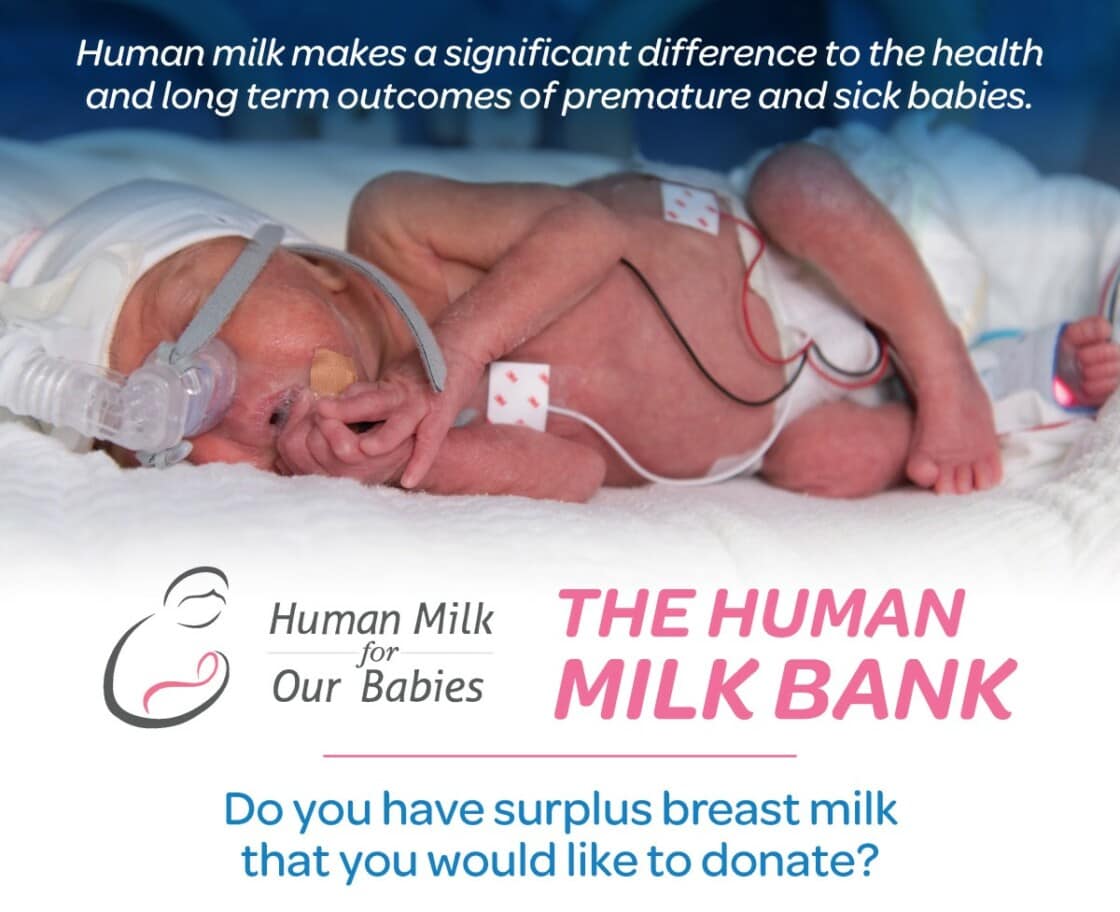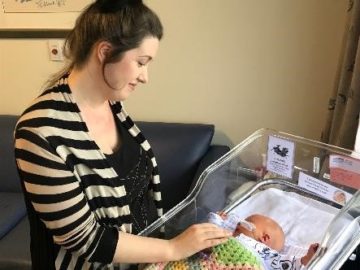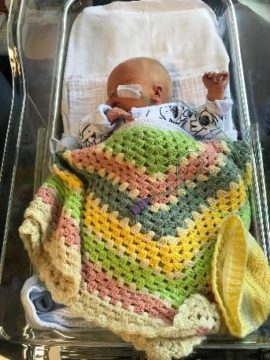The Milk Bank accepts breast milk from parents who have surplus to their own baby's requirements. Mothers are provided information about becoming a breast milk donor and what is involved. Additionally, parents are asked to complete a general health questionnaire and have a blood screening test to ensure that they are free from infections known to be transmitted in breast milk. If the parent meets the screening requirements to become a milk donor, they will be asked to sign the consent to donate form and given further information about the process of expressing, storing and transporting milk. A donor starter pack (includes single use only bottles, bag tag, and labels to label each bottle of milk) will also be provided.
If you would like to know more about becoming a donor contact us;
Phone: (03) 364 4344
Mobile: 021 190 5008 (Manager) or 021 241 2931 (Milk Bank Office)
Email: MilkBankNICU@cdhb.health.nz
For more information download the following documents
Human Donor Breastmilk Health Screen
Human Milk For Our Babies
Mother Wishing to Donate Human Milk Consent Form
Donating Breastmilk and Taking Medication
Waitaha Human Milk Bank Projects
Current: Emergency stock of PDM to Canterbury Primary Birthing Units
Goal:
- To provide interim/ short term nutritional support while parent establishes milk production and /
- To provide short-term support until PDM support is initiated from the Community Milk Bank
Project description
This project aims to extend a pasteurised donor milk service to remote areas such as Te Nikau (West Coast) and Kaikoura Health, Other Hospitals – Timaru and Ashburton Hospitals and Community Maternity Units – Oromairaki (Rolleston), and Rangiora Health Hub.
NB: Pasteurised donor milk (PDM) is a limited resource. PDM from the Waitaha Human milk bank is prioritised for the premature and unwell babies of the Christchurch Neonatal Intensive care Unit. Therefore pasteurised donor milk availability is not guaranteed and can only be extended as ilk stock permits.
Ongoing
- Goal: To promote individual nutritional support
Project description:
This project aims to offer macronutrient analysis of human breast milk, raw (mother’s own milk) or heat-treated donor milk (pasteurised donor milk) to individualise clinically indicative nutritional supportive measures.
- Goal: To support national human milk banking operations
Project description:
This project aims to offer and support a New Zealand approach while working in accordance with international milk banking recommendations. This assures that the milk banking sector in New Zealand is managed with highest safety and quality standards.
See what some our Donors and Recipients have to say…
Milk Donors
Fabulous staff. Appreciated milk collection from home. Donating milk was a rewarding experience. The staff at the milk bank made the process very easy and even collected milk form my doorstep. Emma
It was wonderful to be able to give something back to NICU after all the amazing care they provided our son. A great team and they made donating milk convenient, easy and very rewarding. Sophie
I have loved being able to donate milk to the Human milk Bank. It is truly a gift that I am grateful for to feed my beautiful boy and many other babies. Charlotte
Donating to the milk is a rewarding and satisfying experience. It was a great way to get into a pumping routine and also became a bit of a personal challenge to see how many bottles I could fill. Very motivating. Kerry
I love being able to donate to such a worthy cause. They make the process super easy so it fits right into my schedule with my baby boy. Jessica
Being a milk donor was simple and easy. It fitted in alongside what I was already doing. Regular pick- ups and open communication allowed for me to not fuss over what to do. If you have extra milk, I encourage you to join in. Theresa
I felt so supported during donating. They made it so easy to donate milk, although you are a busy mum. Uncomplicated communication and pick up and you can always be sure it reaches to babies who need it most. Christin
I was fortunate to be able to breastfeed and have surplus milk to donate. Having community pick-ups of frozen milk is so handy. Anthea made the whole process very easy. Unfortunately after starting solids my supply dropped so I was no longer able to donate. However hope to be able to donate again in the future. Thank you for the opportunity. Kadie
Milk Recipients
I was given a lot of information upon receiving the milk but I think there was some confusion amongst the staff over admin of donor milk. I was put onto a very strict pumping regime within 24 hours of giving birth because we received donor milk and it made my time in the hospital post-birth quite stressful. Kirrily
Note: It is normal practice for all mums in the neonatal unit, who wish to breastfeed, to be encouraged to express 2/3 hourly during the day and once at night to achieve 8 expressions in 24 hours in the early weeks. This is based on good research that early, effective, frequent expressing helps to support a potential milk supply as the baby is either too premature or sick to breastfeed directly. It may seem harsh as a mother already has the stress of having a baby in the neonatal unit but there is more stress when mothers are unable to produce milk for their baby because their bodies weren’t stimulated to produce milk in those early days and weeks.
Donors to the milkbank
These photos were taken with the last donations by the mothers. (Donors can continue to donate until their child reaches their first birthday).
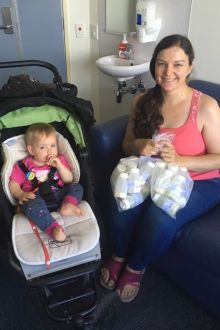
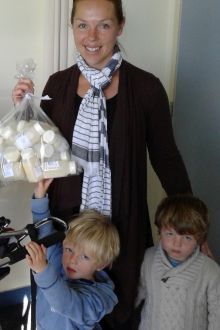
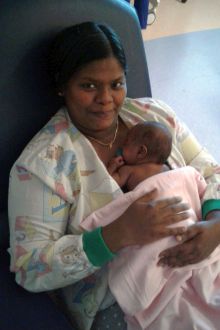
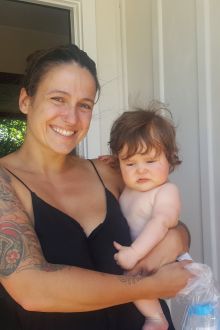
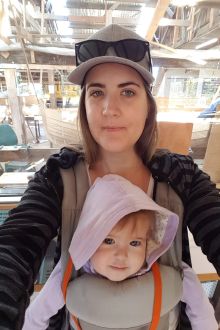
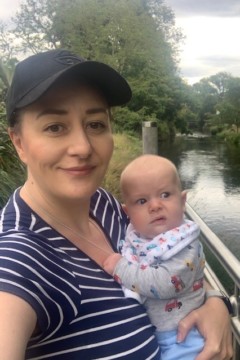
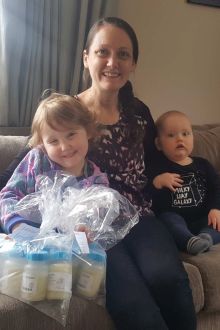
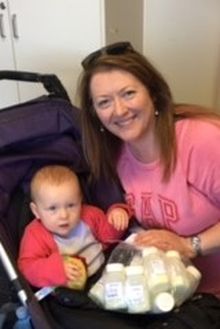
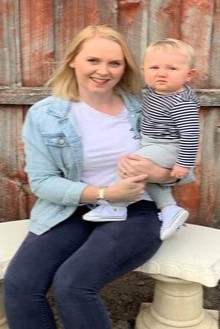
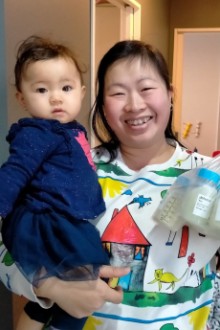
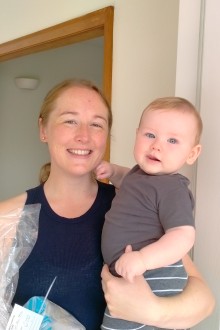
Frequently Asked Questions About Becoming a Breast milk Donor
The following frequently asked questions focuses specifically on the types of questions that potential donors commonly ask.
Gold standard nutrition
Parent’s own milk is the best nutrition for their baby.
Colostrum (first milk)
All babies should receive their own mother's colostrum (first milk) where possible. Colostrum is high in protein and low in fat and sugar. It's filled with white blood cells that produce antibodies. These antibodies will strengthen your baby's immune system. Colostrum is highly concentrated and nutrient-dense even in the smallest doses, so your baby's tummy doesn't need a lot to reap its benefits. In terms of duration of donor milk supply, the Milk Bank Executive committee have set the following guidance:
When breastfeeding is not possible
For families where breastfeeding is not possible, the Human Milk Bank can provide donor milk for:
- Extremely low birth weight (premature) babies up to 36 weeks to prevent serious gut infection followed by a transitional period where infant formula is introduced slowly over a week or two as tolerated by the baby.
- High risk Low birth weight babies up to 36 weeks or during neonatal period (4 weeks), followed by a transitional period where infant formula is introduced slowly over a week or as tolerated by the baby.
- Low risk, low birth weight during neonatal period followed by a transitional period where infant formula is introduced slowly over a week or as tolerated by the baby.
For parents where a delay in milk production is being supported, there is no definitive cut off. The aim is to provide donor milk during the window of opportunity that there is to maximise maternal milk production. The use of pasteurised donor milk can therefore be very variable, and is treated on a case-by-case basis. Sometimes only small volumes are needed; at other times support can continue for several weeks.
This is all dependent on the availability of Pasteurised donor milk which may mean that the HMB does not have sufficient PDM stock to meet the needs of all families.
Can all babies in the NICU receive pasteurised donor milk?
Premature and unwell/ sick babies who have been admitted to the NICU are prioritised to receive Pasteurised Donated Milk (PDM) when their parent’s own milk production is not enough to meet their nutritional requirement. PDM is a very precious resource with a finite supply. Availability of PDM stock is reviewed regularly and Dispensing is updated using a traffic light system.
My baby is admitted to hospital, can my baby receive pasteurised donor milk
The stress associated with hospitalisation can impact breastmilk production. In such instances parents are encouraged to continue breast feeding as able and commence regular expressing to promote increased milk production. Introduction of a galactogogue may be necessary in some cases to support milk production. PDM use may be extended as a bridge to supplement mother’s own milk. PDM use outside of the NICU is influenced by the availability of pasteurised donor milk. All requests for PDM are submitted to the Milk Bank Executive Committee (HMB’s prioritisation panel) for clinical prioritisation. Review of PDM use will be daily.
Other hospitals or NICUs
Other NICU /hospital requests are reviewed by the Milk Bank Executive team or Neonatal Clinical Director. The priority for PDM support is given to recipients with high risk factors for necrotising enterocolitis (NEC).

